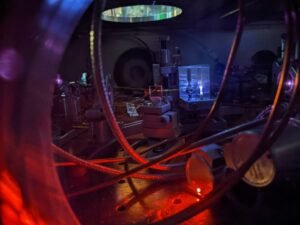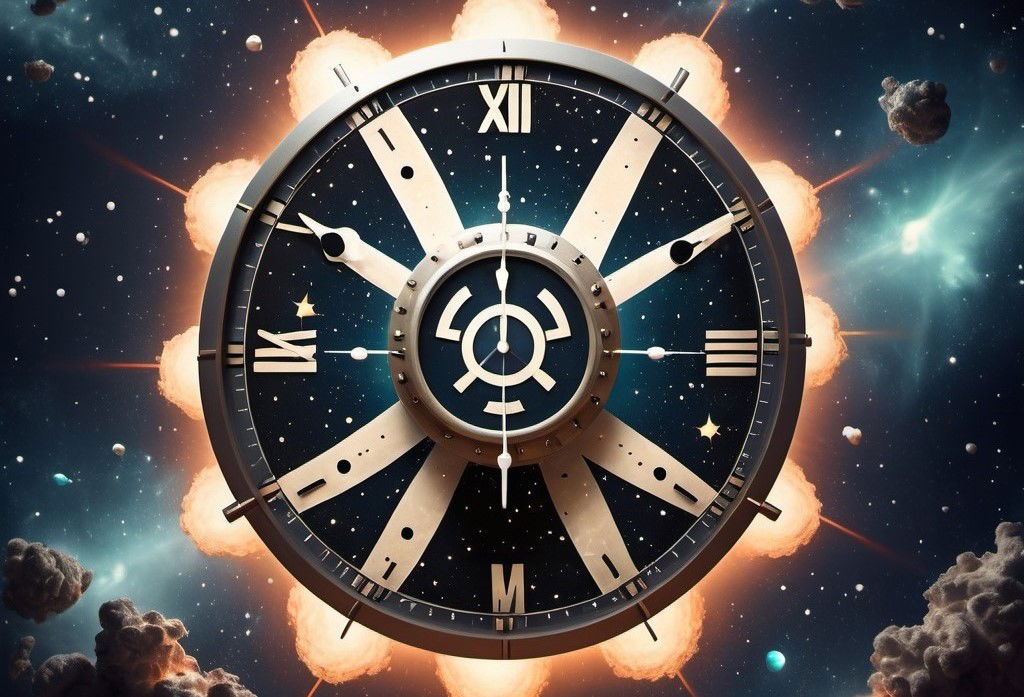A collaboration of scientists from the National Institute of Standards and Technology (NIST) and the University of Colorado, Boulder, known as JILA (formerly the Joint Institute for Laboratory Astrophysics) has successfully demonstrated all of the key technologies for building the world’s first nuclear clock. Designed to measure signals from the core of an atom, a working nuclear clock would be more accurate than the current gold standard for timekeeping, the atomic clock.
“Imagine a wristwatch that wouldn’t lose a second even if you left it running for billions of years,” said NIST and JILA physicist Jun Ye in a statement. “While we’re not quite there yet, this research brings us closer to that level of precision.”
Often considered to be the Holy Grail of timekeeping, a fully functional nuclear clock could have wide-ranging implications for everyday technologies like a hyper-accurate GPS, faster internet speeds, and split-second financial transactions. This technology could also help to revolutionize physics, including confirming (or refuting) universal constants or even solving long-standing mysteries like the nature of dark matter.
What Makes a Nuclear Clock Tick?
The most accurate timekeeping device currently in use is the atomic clock. These devices tune laser light to specific frequencies that cause electrons to jump between energy levels. This reaction occurs at regular, predictable intervals, making the nuclear clock a highly accurate timekeeper.
According to JILA, the research team behind the effort to build the world’s first nuclear clock employed an ultraviolet laser specifically designed to measure the frequency of an energy jump in the nucleus of thorium atoms embedded within a solid crystal. The customized laser was joined with an “optical frequency comb” that can count the actual number of ultraviolet “wave cycles” that create the periodic energy jump.


“Nuclear clocks would utilize energy jumps within an atom’s tiny central region, known as the nucleus, where particles called protons and neutrons cram together,” JILA explains. “These energy jumps are much like flipping a light switch. Shining laser light with the exact amount of energy needed for this jump can flip this nuclear “switch.”
Unfortunately, building a device that can exploit this phenomenon has remained elusive. That’s because coherent X-rays must bombard most atomic nuclei at extremely high power levels. According to the JILA team, current human technology cannot generate X-rays that are this powerful.
The researchers changed this equation in their nuclear clock demonstration by focusing on thorium-229. Unlike other nuclear clock options that would require these unattainable X-ray energies, the team says that the nucleus of a thorium-229 atom “has a smaller energy jump than any other known atom, requiring ultraviolet light (which is lower in energy than X-rays).”
To test its accuracy, the team says they rested their demonstration technology’s ultraviolet frequency against the optical frequency of the world’s most accurate atomic clocks, which use strontium atoms, “establishing the first direct frequency link between a nuclear transition and an atomic clock.” According to the researchers, their results were beyond encouraging, with their nuclear clock demonstrator dramatically outpacing the accuracy of the current state-of-the-art technology.
“This effort has achieved a level of precision that is one million times higher than the previous wavelength-based measurement,” they explain.
More Precise Timekeeping Could Help Revolutionize Science
The JILA researchers concede that they stopped short of building a working nuclear clock. However, they claim their work successfully demonstrated all the technologies necessary to build this ultimate timekeeper. This includes “the thorium-229 nuclear transition to provide the clock’s “ticks,” a laser to create precise energy jumps between the individual quantum states of the nucleus, and a frequency comb for direct measurements of these “ticks.”
“The research has already yielded unprecedented results, including the ability to observe details in the thorium nucleus’s shape that no one had ever observed before — it’s like seeing individual blades of grass from an airplane,” they explain.
Although several steps remain before scientists build the first working nuclear clock, the team says it is worth the effort. That’s because a nuclear clock is much less affected by outside interference like electromagnetic radiation than an atomic clock. The jumps in frequency caused by the ultraviolet laser are also much higher than those in the strontium-based atomic clocks. This means the nuclear clock can produce more “ticks” per second, resulting in more precise timekeeping.
“While this isn’t yet a functioning nuclear clock, it’s a crucial step towards creating such a clock that could be both portable and highly stable,” the JILA team explains. “The use of thorium embedded in a solid crystal, combined with the nucleus’s reduced sensitivity to external disturbances, paves the way for potentially compact and robust timekeeping devices.”
The Study “Frequency ratio of the 229mTh nuclear isomeric transition and the 87Sr atomic clock” was published in the journal Nature.
Christopher Plain is a Science Fiction and Fantasy novelist and Head Science Writer at The Debrief. Follow and connect with him on X, learn about his books at plainfiction.com, or email him directly at christopher@thedebrief.org.

